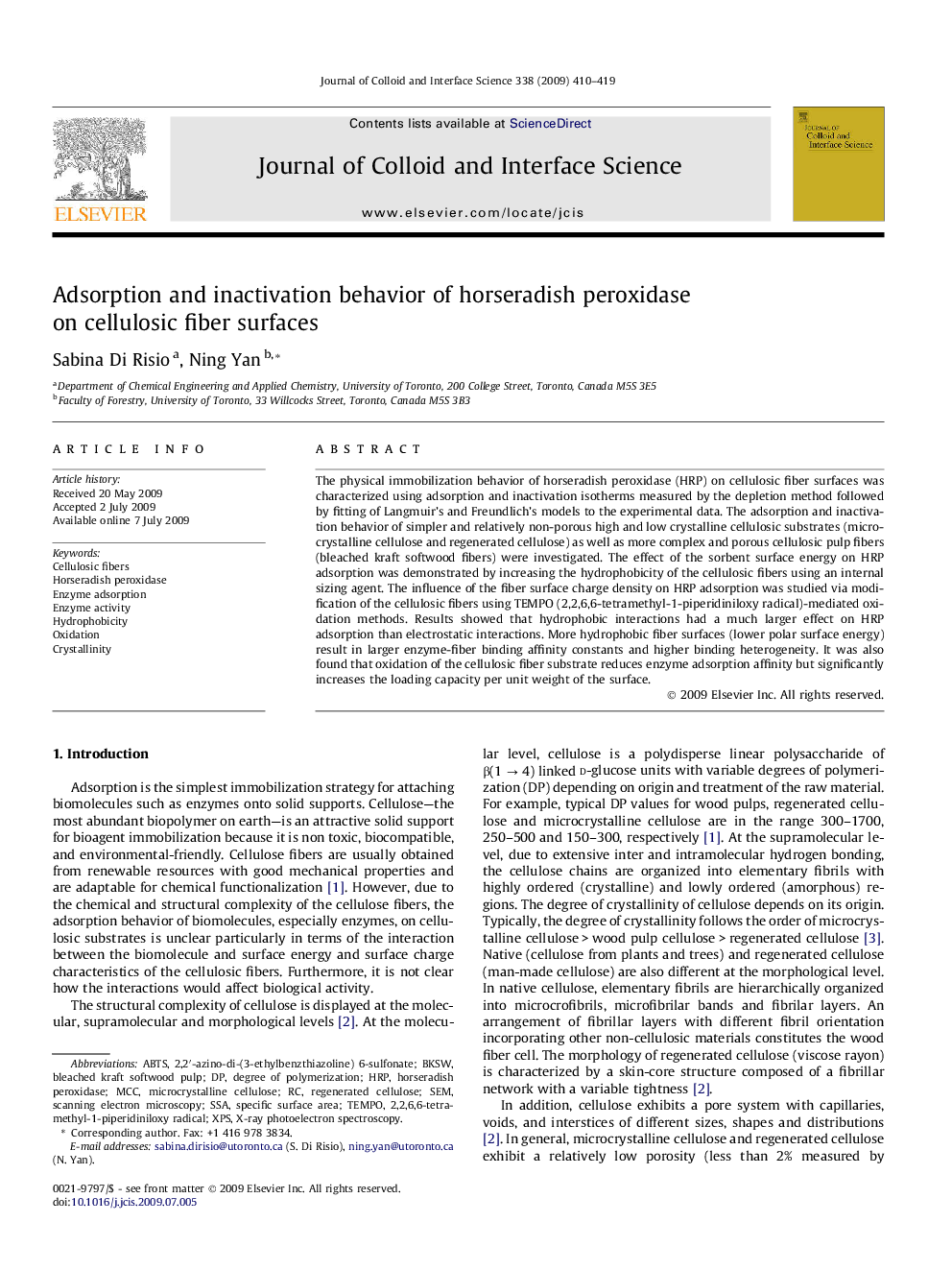| Article ID | Journal | Published Year | Pages | File Type |
|---|---|---|---|---|
| 610449 | Journal of Colloid and Interface Science | 2009 | 10 Pages |
The physical immobilization behavior of horseradish peroxidase (HRP) on cellulosic fiber surfaces was characterized using adsorption and inactivation isotherms measured by the depletion method followed by fitting of Langmuir’s and Freundlich’s models to the experimental data. The adsorption and inactivation behavior of simpler and relatively non-porous high and low crystalline cellulosic substrates (microcrystalline cellulose and regenerated cellulose) as well as more complex and porous cellulosic pulp fibers (bleached kraft softwood fibers) were investigated. The effect of the sorbent surface energy on HRP adsorption was demonstrated by increasing the hydrophobicity of the cellulosic fibers using an internal sizing agent. The influence of the fiber surface charge density on HRP adsorption was studied via modification of the cellulosic fibers using TEMPO (2,2,6,6-tetramethyl-1-piperidiniloxy radical)-mediated oxidation methods. Results showed that hydrophobic interactions had a much larger effect on HRP adsorption than electrostatic interactions. More hydrophobic fiber surfaces (lower polar surface energy) result in larger enzyme-fiber binding affinity constants and higher binding heterogeneity. It was also found that oxidation of the cellulosic fiber substrate reduces enzyme adsorption affinity but significantly increases the loading capacity per unit weight of the surface.
Graphical abstractSketches of HRP adsorption behavior on cellulosic fiber surfaces with different surface energy (left) and surface charge density (right) as examined in this paper.Figure optionsDownload full-size imageDownload as PowerPoint slide
